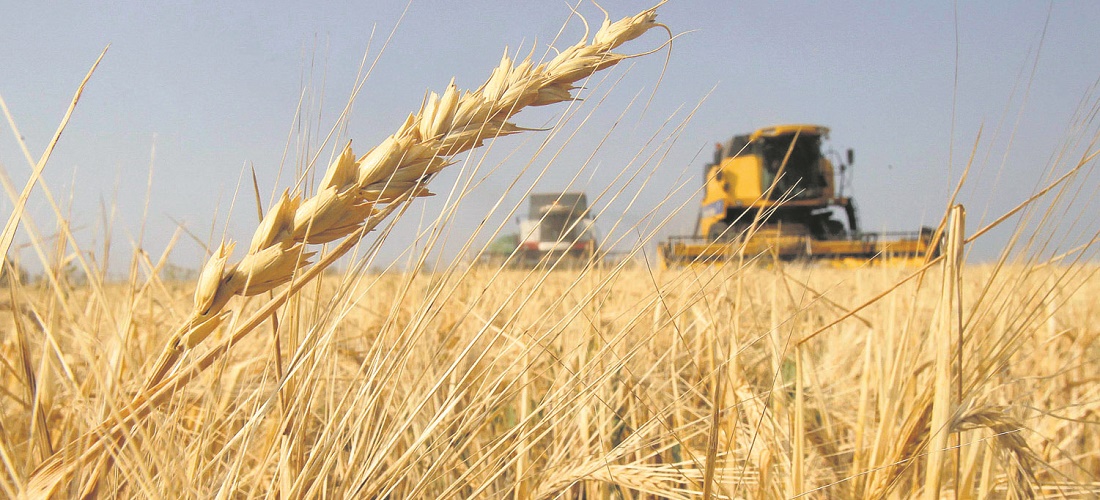
Brazil Starts the Year with a Reduced Wheat Supply
Feb, 06, 2025 Posted by Denise VileraWeek 202506
The year 2025 begins with challenges for the wheat market in Brazil. The domestic availability of the cereal is at a reduced level, reflecting lower production in the second half of 2024, according to a report from the Center for Advanced Studies in Applied Economics (CEPEA – ESALQ USP) for January.
Wheat production in Brazil fell by 2.6% compared to the previous year, with the National Supply Company (Conab) forecasting a harvest of 7.89 million tons in 2024. An 11.9% reduction influenced the decline in the cultivated area, which shrank to 3.06 million hectares. However, productivity increased by 10.6%, reaching 2.58 tons per hectare, partially offsetting the loss in cultivated land.
With this reduction in domestic supply, Brazil will continue to rely on imports to meet internal demand, which is expected to reach 11.9 million tons. Even considering initial stocks, the forecast is that the domestic deficit will be around 3.5 million tons, keeping the market active and driving external purchases.
Argentina, Brazil’s largest wheat exporter, may ease external supply as the Argentine government has reduced export taxes from 12% to 9.5% until June 30, 2025. However, competition with other countries will be more intense due to increased wheat purchases from Argentina by China—a movement not seen since the 1990s, according to the report.
On the global stage, China is expected to become the world’s fourth-largest wheat importer, with an estimated 10.5 million tons, according to the United States Department of Agriculture (USDA). Additionally, U.S. export policies may change under Donald Trump’s administration, potentially affecting international trade.
The following chart reveals the top ten countries of origin for Brazilian wheat imports, according to data derived from Datamar’s DataLiner.
Top 10 Countries of Origin for Brazilian Wheat Imports | 2024 | WTMT
Source: DataLiner (click here to request a demo)
Prices
In the global market, Argentina’s wheat harvest is expected to reach 18.6 million tons, a 23% increase compared to the 2023/24 cycle. Worldwide, the USDA projects total wheat production of 793.2 million tons for the 2024/25 season, reflecting a slight 0.3% increase over the previous year.
However, some major producers, including Russia, the European Union, Turkey, and Ukraine, are expected to face production declines of 10.9%, 10.2%, 9.5%, and 0.4%, respectively. This could result in a tighter global supply and increased pressure on prices.
Global consumption is also projected to rise, albeit modestly, by 0.5%, reaching 801.9 million tons. As a result, final wheat stocks are expected to fall by 3.2%, dropping to 258.8 million tons—the lowest level since the 2015/16 season. This scenario could reduce the global stock-to-use ratio to 32.4%, impacting international market dynamics. Furthermore, the global wheat trade is expected to hit its lowest volume since the 2021/22 season, totaling 212.3 million tons.
Therefore, international prices are expected to remain under pressure, particularly among the largest exporters: the United States, Canada, Australia, Argentina, and Kazakhstan. However, imports will be more evenly distributed among various countries. This dynamic may influence flour prices in Brazil, which are expected to rise, especially in the first quarter of 2025, due to the impact of external purchases and import parity.
Profitability for Producers
On the other hand, the cost-benefit ratio for producers tends to improve, as operational costs have not risen as sharply as wheat prices, leading to greater profitability for those who continue investing in the crop.
In Brazil, wheat profitability has varied by region. Data from CEPEA’s agricultural cost team show that, despite higher costs in some areas, wheat sales prices recorded significant increases of between 30% and 34% compared to the previous year.
For example, in Rio Grande do Sul, operational costs rose by 8.5% in Carazinho. In Xanxerê (Santa Catarina), the increase was 5.5%. In regions like western Paraná and Guarapuava (Paraná), cost increases were milder at 2% and 0.7%, respectively. However, the impact on cost-benefit varied: in Xanxerê, for example, revenue remained below costs, while in other regions, net income was positive, with rates ranging from 15% to 25%.
The potential increase in wheat cultivation in Brazil is also tied to attractive prices and good profitability. However, the crop faces climatic challenges, particularly in the South and Southeast regions, which could limit investments, according to CEPEA.
In the Cerrado region, the cultivated wheat area is expected to expand faster than in the South and Southeast, although it still represents a small share of the national supply. The states of Bahia, Goiás, and Minas Gerais have been expanding irrigated wheat production, becoming increasingly relevant to the domestic supply.
Source: Globo Rural
-
Commodities
Jul, 26, 2024
0
Commodities Ranking for East Coast South America | Jan-May 2024 vs. Jan-May 2023 | DataLiner
-
Other Cargo
Jun, 30, 2022
0
Cotton: textile exports grow 29.61% from January to April
-
Meat
Apr, 18, 2022
0
China’s quarterly pork output has reached its highest level in 3 years
-
Oil and Gas
Jan, 13, 2022
0
Petrobras increases LNG imports by 200% in 2021



